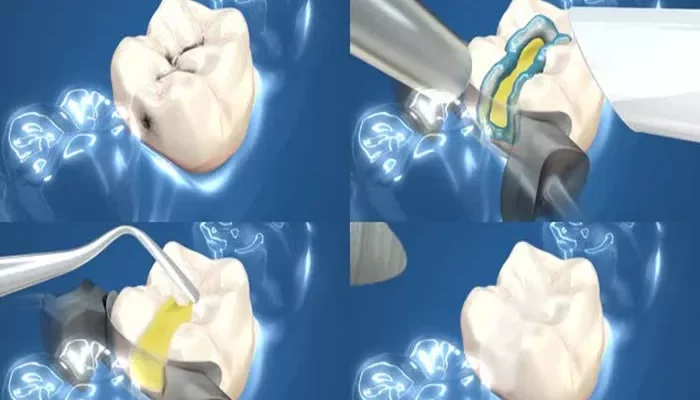Dental care is essential for maintaining oral health, and using the right products can significantly impact the effectiveness of your dental hygiene routine. One common question among patients who have recently had dental work, particularly fillings, is whether it is safe to brush their teeth after using filling compound toothpaste. This article will explore the reasons for using filling compound toothpaste, the importance of proper oral hygiene, and the best practices for brushing your teeth after dental fillings.
Understanding Filling Compound Toothpaste
What Is Filling Compound Toothpaste?
Filling compound toothpaste is a specialized dental product designed for individuals with dental restorations, such as fillings, crowns, or bridges. This type of toothpaste often contains ingredients that help protect and maintain dental work while promoting overall oral health. It may include fluoride for strengthening enamel, desensitizing agents for sensitive teeth, and other components that support gum health.
Why Use Filling Compound Toothpaste?
Using filling compound toothpaste is beneficial for several reasons:
Protection: It helps protect dental restorations from wear and tear.
Strengthening Enamel: Many filling compound toothpastes contain fluoride, which strengthens the enamel and helps prevent future decay.
Sensitivity Relief: If you experience sensitivity around fillings, these toothpastes often contain desensitizing agents that can alleviate discomfort.
Gum Health: Ingredients in filling compound toothpaste can promote healthier gums, reducing the risk of gum disease.
The Importance of Brushing After Dental Work
Why Is Oral Hygiene Important?
Maintaining good oral hygiene is crucial after any dental procedure, including fillings. Proper brushing and flossing help remove plaque and food particles that can lead to decay and gum disease. After receiving a filling, the area around the restoration can be more susceptible to bacteria, making diligent oral care even more important.
Benefits of Brushing After Using Filling Compound Toothpaste
Brushing your teeth after using filling compound toothpaste can provide several benefits:
Removes Residue: Brushing helps remove any leftover toothpaste, ensuring that your mouth is clean.
Prevents Staining: Regular brushing can help prevent staining of dental restorations, keeping them looking their best.
Promotes Fresh Breath: Good oral hygiene practices help maintain fresh breath by eliminating food particles and bacteria.
Supports Overall Oral Health: Consistent brushing contributes to healthier teeth and gums, reducing the risk of future dental issues.
Can I Brush My Teeth Immediately After Using Filling Compound Toothpaste?
Recommendations for Timing
While it is generally safe to brush your teeth after using filling compound toothpaste, timing can be important. Here are some recommendations:
1. Wait a Short Time
After applying filling compound toothpaste, it is advisable to wait at least 30 minutes before brushing your teeth. This allows the active ingredients in the toothpaste to work effectively without being immediately washed away by brushing.
2. Follow Your Dentist’s Instructions
Always follow the specific instructions provided by your dentist or dental hygienist. They may have recommendations based on your individual dental situation.
Gentle Brushing Technique
When you do brush your teeth after using filling compound toothpaste, be gentle. Here are some tips for effective brushing:
Use a Soft-Bristled Toothbrush: A soft-bristled toothbrush is less abrasive on your teeth and gums, making it ideal for sensitive areas.
Brush Gently: Use gentle, circular motions to clean your teeth without causing damage to the filling or surrounding gum tissue.
Focus on All Areas: Ensure you brush all surfaces of your teeth, including the fronts, backs, and chewing surfaces, as well as along the gum line.
What to Avoid After Using Filling Compound Toothpaste
1. Avoid Hard Foods
After using filling compound toothpaste, it is wise to avoid hard or sticky foods for at least 24 hours. Hard foods can put pressure on fillings and may lead to discomfort or even damage.
2. Limit Acidic Beverages
Acidic beverages, such as soda or citrus juices, can erode enamel and irritate sensitive teeth. If you’ve recently had dental work, it’s best to limit these drinks for a few days.
3. Avoid Smoking
If you smoke, consider avoiding it for at least 24 hours after using filling compound toothpaste. Smoking can hinder healing and contribute to oral health issues.
Signs You May Need to Consult Your Dentist
While brushing after using filling compound toothpaste is generally safe, there are specific signs you should watch for that may indicate a need to consult your dentist:
1. Persistent Sensitivity
If you experience prolonged sensitivity after using filling compound toothpaste, it may indicate an underlying issue with the filling or tooth. Consult your dentist for an evaluation.
2. Pain or Discomfort
If you feel pain or discomfort in the filled tooth or surrounding area, it is essential to seek professional advice. This could signal complications, such as an improperly placed filling or decay.
3. Changes in Filling Appearance
If you notice any changes in the appearance of your filling, such as cracks, chips, or discoloration, contact your dentist.
These changes may require attention to prevent further issues.
4. Gum Issues
If you experience swelling, bleeding, or persistent discomfort in your gums around the filled tooth, it is crucial to consult your dentist. These symptoms could indicate gum disease or infection.
Conclusion
Brushing your teeth after using filling compound toothpaste is not only safe but also an essential part of maintaining good oral hygiene. Waiting a short time before brushing allows the active ingredients in the toothpaste to work effectively.
Following gentle brushing techniques and avoiding certain foods and habits can help protect your dental restorations and promote overall oral health. If you experience any concerning symptoms, such as persistent sensitivity or pain, it is important to consult your dentist. They can provide guidance and address any potential issues with your fillings or overall dental health.
By prioritizing your oral hygiene and using the right products, you can ensure that your dental fillings remain effective and contribute to a healthy, beautiful smile.
Related topics:

